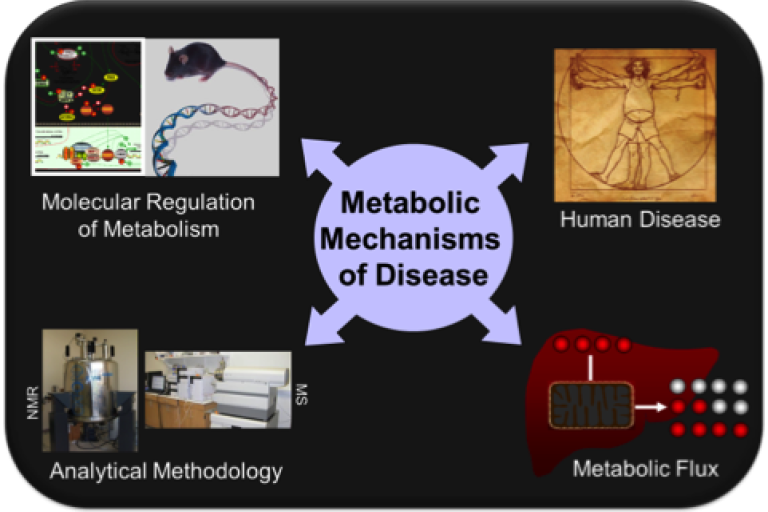
The Burgess lab uses MS, NMR, and stable isotope tracers to examine the metabolism of disease in humans and to determine the mechanisms of altered metabolism in laboratory models.
The Burgess lab studies how how metabolic flux is altered by disease, pharmacology, or targeted genetic interventions. Metabolic flux is the rate of turnover of molecules through specific biochemical pathways.
We use metabolites labeled with stable non-radioactive isotopes, usually 2H and 13C, to trace the activity of targeted pathways. These tracers are then followed by detecting their presence in downstream metabolites using nuclear magnetic resonance (NMR) spectroscopy and mass spectrometry (MS). The presence of those tracers in downstream metabolites can be used as a qualitative indication of metabolic flux or quantified as rates using mathematical models of metabolism.
We focus on pathways of oxidative and biosynthetic metabolism in the context of obesity, insulin resistance, and diabetes.
Our goal is to identify metabolic pathways that play a role in human disease using translational approaches and then test the mechanisms using gain or loss of function models. Most of our focus is on liver-related mechanisms, but we have also studied heart, muscle, adipose tissue, and β-cells.
Our research has been supported by the National Institutes of Health (NIH), the American Diabetes Association (ADA), the Robert A. Welch Foundation, and UT Southwestern Medical Center.